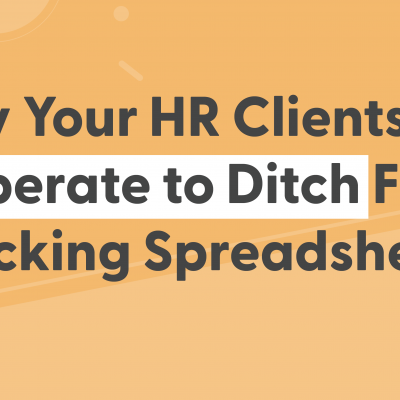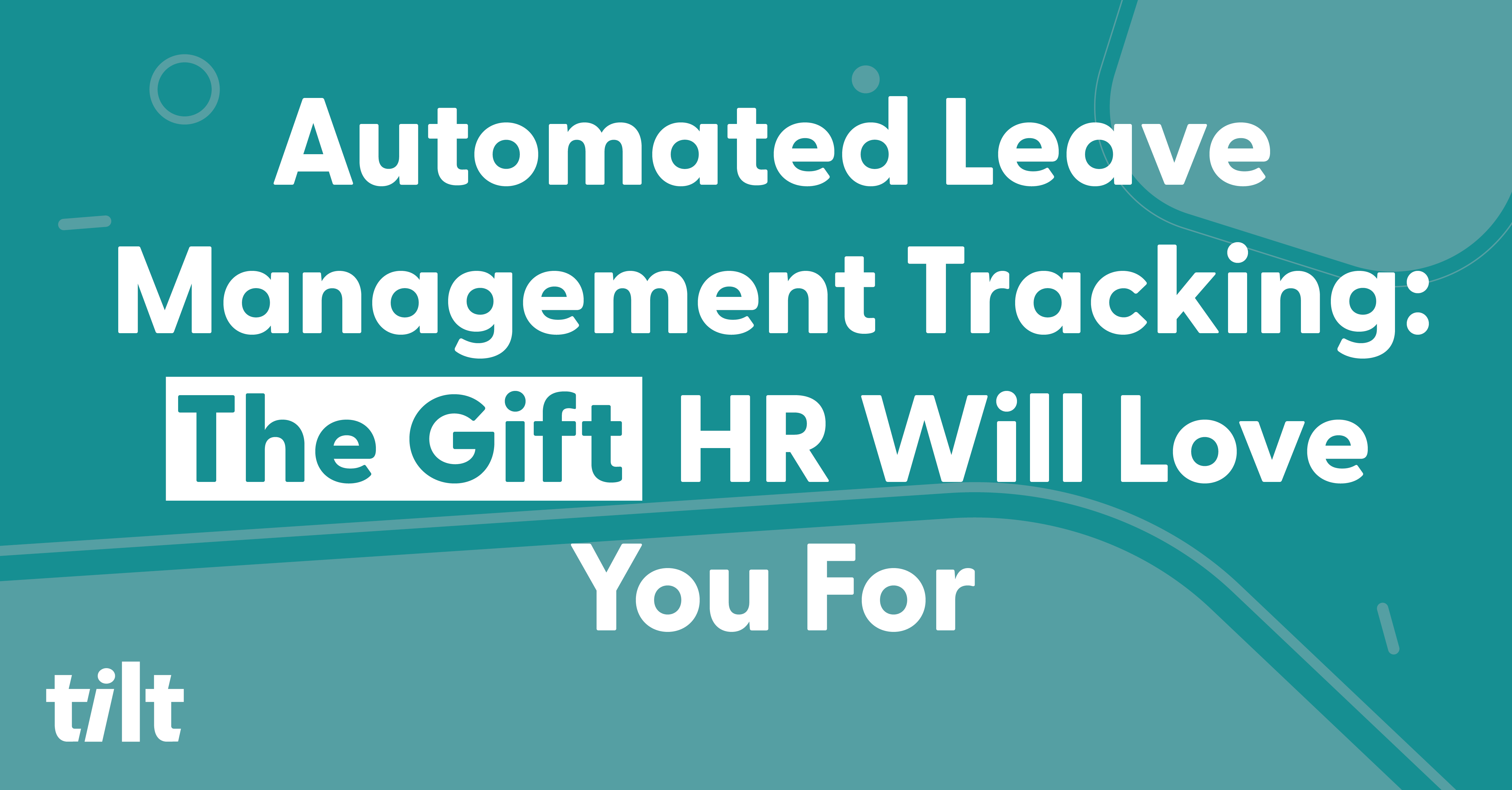When asked what the biggest frustration was surrounding managing leaves of absence and FMLA, one Sr. HR Ops manager at a leading benefits management org put it this way:
“Spreadsheets! So many spreadsheets!”
The tasks and asks of a modern HR Leader are seemingly endless, but across the board one of the least favorite processes is tracking FMLA and other leaves manually using spreadsheets. While that might seem like an innocuous to-do, we’ve outlined all the reasons below when it’s a nightmare for your clients and why providing them with a more modern solution can help save their sanity.
What Needs to be Tracked for FMLA?
A lot. And if your clients are using a spreadsheet, or multiple spreadsheets, or multiple systems without a single source of truth, there’s a good chance that they’re at their wit’s end trying to manage it all in real time. Let’s break down all the elements of FMLA your clients are likely currently trying to track in a spreadsheet:
Eligibility: Your HR client is required to determine whether an employee is eligible for FMLA leave. Here are the requirements:
- The employee must have worked for the employer for at least 12 months as of the date FMLA is to start
- The employee must have worked at least 1,250 hours over the 12-month period immediately preceding the leave,
- The employee must work at a location where the company employs 50 or more employees within 75 miles.
Qualifying Reasons: HR leaders need to track the specific reasons for which an employee is requesting FMLA leave. Qualifying reasons include the birth, adoption, or foster care placement of a child, the serious health condition of the employee, or the need to care for a spouse, child, or parent with a serious health condition.
Certification: Employers should obtain and track medical certification or documentation supporting the need for FMLA leave when possible. This documentation helps verify that the leave is being taken for a qualifying reason.
Notices: Your clients are also responsible for providing employees with required FMLA notices. This includes providing an FMLA eligibility notice, a rights and responsibilities notice, and a designation notice within the timeframes specified in the regulations.
Dates: Employers need to keep track of when FMLA starts and stops for an employee, updating dates accordingly if they change throughout the course of a leave.
Amount of Leave: Tracking the amount of FMLA leave taken by eligible employees can be a major headache for HR, but they’ve got to do it. FMLA provides up to 12 weeks of unpaid leave in a 12-month period, although certain circumstances may allow for up to 26 weeks of leave for military caregiver leave. As changes occur to a leave (say the start and stop dates change, or there is intermittent usage), HR needs to stay on track of how many FMLA hours are being used up–and when the employee’s FMLA entitlement refreshes
Job Protection: The job status of employees on FMLA leave also needs to be tracked to ensure they are reinstated to their original position, or an equivalent one, upon their return from leave. This is to ensure the employee does not suffer any adverse employment actions due to taking FMLA leave.
Recordkeeping: While there is no particular order or form of records required, employers must keep the records specified by FMLA regulations for no less than three years and make them available for inspection. These records should include:
- Dates FMLA leave is taken by FMLA-eligible employees (leave must be designated in records as FMLA leave), including the hours of the leave, if FMLA leave is taken in increments of less than one full day;
- Basic payroll and identifying employee data;
- Premium payments of employee benefits.
- Copies of employee notices of leave provided to the employer under the FMLA, if in writing, and copies of all eligibility notices given to employees as required under the FMLA (copies may be maintained in employee personnel files).
- Any documents (including written and electronic records) describing employee benefits or employer policies and practices regarding the taking of paid and unpaid leave.
- Records of any dispute between the employer and an eligible employee regarding the designation of leave as FMLA leave, including any written statement from the employer or employee of the reasons for the designation and for the disagreement.
Intermittent Leave: Employers must track and manage intermittent FMLA leave, which allows eligible employees to take leave in separate blocks of time for qualifying reasons.
Military Family Leave: For eligible employees, employers must track the amount of leave taken for military family reasons, such as qualifying exigency leave or military caregiver leave.
We should mention that your clients need to track all of this for each FMLA-eligible leave they manage. Since failure to comply with FMLA requirements can result in legal liabilities and penalties, relying on a nest of spreadsheets and tabs likely has your clients praying for a better option.
Why Your Clients Can’t Afford To Mishandle FMLA Tracking
As if the administrative burden outlined above weren’t enough of a hardship for HR and People Ops leaders, FMLA missteps can potentially expose your clients to some serious negative ramifications. Here are some of the potential risks associated with manually tracking FMLA:
- Data Entry Errors
- Mishandling Complex Calculations
- Lack of Visibility and Accessibility
- Security Concerns
- A Cloudy Audit Trail
- Version Control Issues
- Scalability Problems
Which can lead to the following:
Legal Consequences
Employees who believe their FMLA rights have been violated, due to tracking mismanagement or otherwise, can file lawsuits against their employers or go to the EEOC and file a complaint at no cost to them. Given that the average cost to defend an FMLA lawsuit is roughly $80,000, it makes it all the more important that your client’s processes are foolproof.
Employee Relations
Your clients know that accurately managing FMLA is not just a legal requirement, but also a deeply human part of their HR function. Inadequate FMLA monitoring can result in employee confusion and frustration, which in turn can harm morale and overall job contentment.
Operational Disruptions
FMLA audits can be a significant disruptor to workflow and productivity if your client’s organization doesn’t have their data in order. Non-compliance with FMLA regulations can subject their organization to scrutiny, which is stressful, potentially costly, and diverts resources away from other operational tasks. The less structured and robust their FMLA data is, the more disruptive this situation can become.
Reputational Damage
Negative publicity is sometimes difficult to quantify (though not always…), can have a profound and visible impact on an organization. In the case of your client, their reliance on manual processes may lead to recurrent FMLA violations and poor employee experiences, which can inflict harm upon their organization’s reputation. Such negative press can, in turn, erode the appeal of their brand, potentially deterring prospective employees, customers, and investors. In an age where public perception plays a pivotal role in success, safeguarding reputation through compliance and efficient processes is paramount.
About Tilt
Tilt is leading the charge in all things leave of absence management through easy-to-use tech and human touch. Since 2017, our proprietary platform and Empathy Warriors have been helping customers make leave not suck by eliminating administrative burdens, keeping companies compliant, and providing a truly positive and supportive leave of absence experience for their people.







